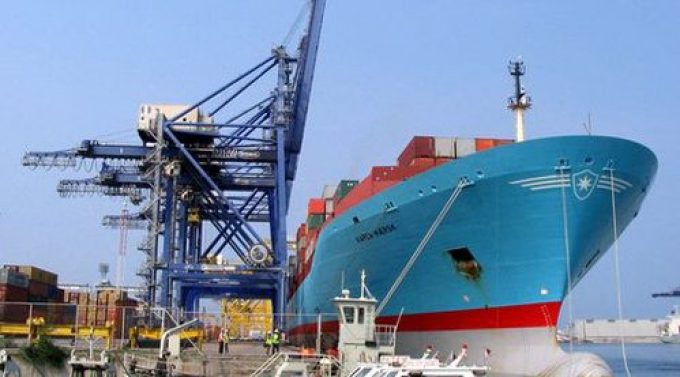Thai-Chinese consortium to build Laem Chabang Phase III container terminals
Thai utility group Gulf Energy Development, Thai state-owned oil and gas company PTT and Chinese ...
GXO: POLISH DEAL EXTENSIONDSV: TRIMMINGDSV: TRUMP TARIFFS IMPACTHLAG: GREEN PUSHDHL: ECOMM TIESKNIN: PARTNERSHIP EXTENSIONMAERSK: DECARB PUSHUPS: DIVIDEND RISKXOM: UPDATEVW: MILESTONE LINE: UNLIKEDXOM: DRILL BABY DRILLMAERSK: GREEN PUSHGM: BIG HIT
GXO: POLISH DEAL EXTENSIONDSV: TRIMMINGDSV: TRUMP TARIFFS IMPACTHLAG: GREEN PUSHDHL: ECOMM TIESKNIN: PARTNERSHIP EXTENSIONMAERSK: DECARB PUSHUPS: DIVIDEND RISKXOM: UPDATEVW: MILESTONE LINE: UNLIKEDXOM: DRILL BABY DRILLMAERSK: GREEN PUSHGM: BIG HIT

Port Authority of Thailand (PAT) plans to develop inland container ports to serve as trucking links to neighbouring Cambodia, Laos, Myanmar and Vietnam.
The ports, freight logistics centres for Thailand’s Greater North-east region will cost around $66m and could be completed as early as 2025.
PAT director-general Kamolsak Promprayoon said that, in addition to sites in the Eastern Economic Corridor (EEC), dry ports are being considered to be built in Chachoengsao, Korat and Khon Kaen.
The EEC comprises Chachoengsao, Chonburi and Rayong provinces, Bangkok and Samut Prakan.
The development plan for the Chachoengsao dry port, east of Bangkok, will be submitted for Ministry of Communications consideration this year. However, between Khon Kaen and Korat, Mr Kamolsak said Khon Kaen was the priority and in-depth discussions and research on site selection and planning are under way.
“A regional dry port in the north-east must take into account many factors, such as international channels connecting to China and Laos to strengthen cross-border trade,” said Mr Kamolsak.
He noted that Khon Kaen could generate annual container volumes of 17m teu. North-east Thailand is largely agricultural and he said around Khon Kaen there were 34 rice companies producing around a billion tonnes tonnes, nine tapioca companies producing 372 million tonnes and firms involved in fruit and vegetables and chemical and electronic products.
Comment on this article